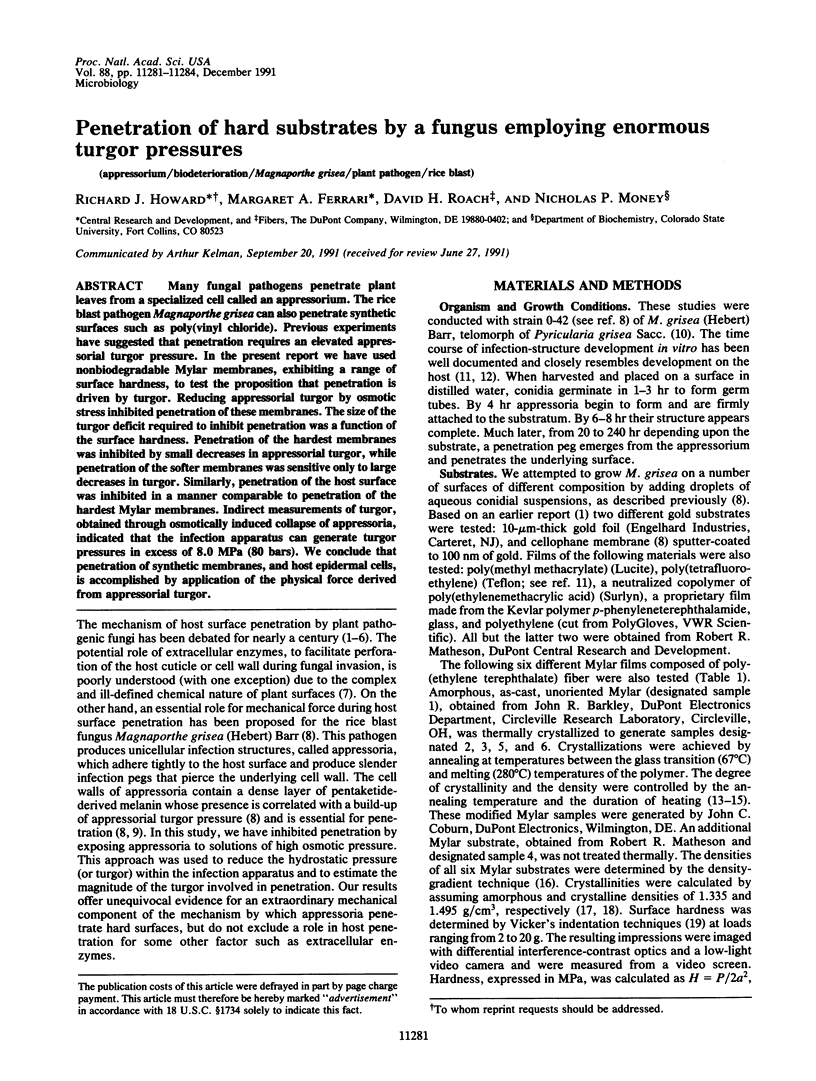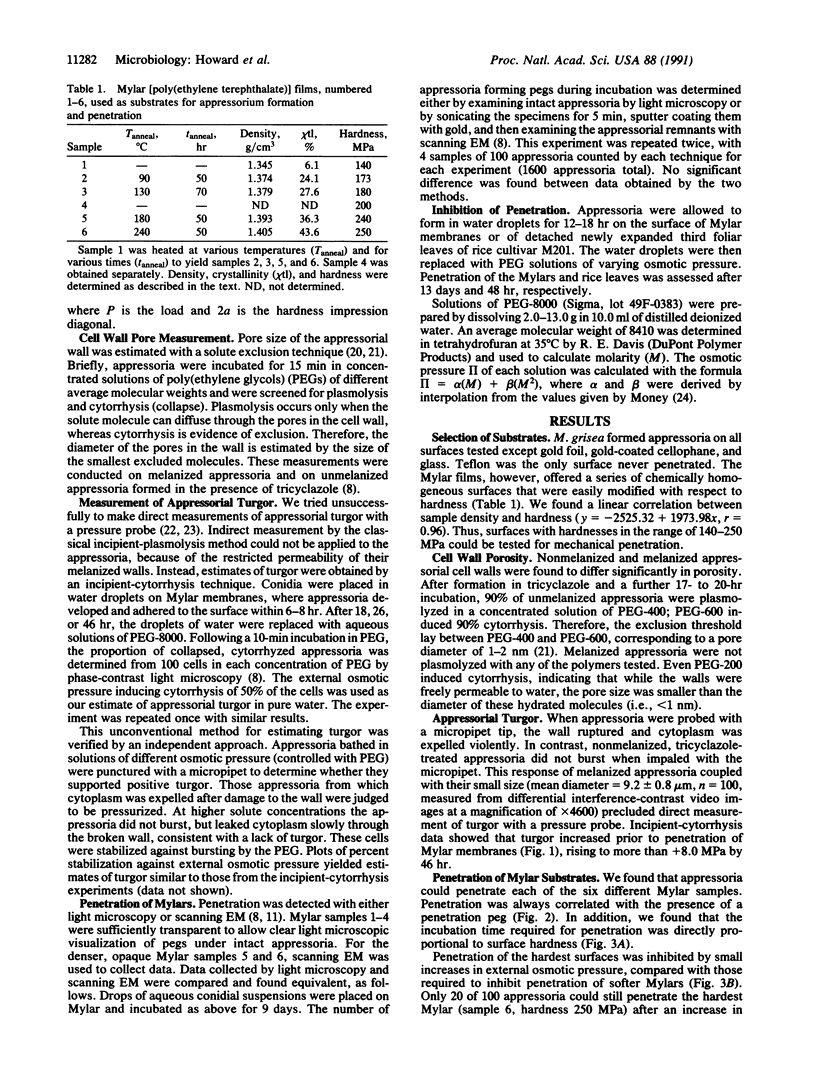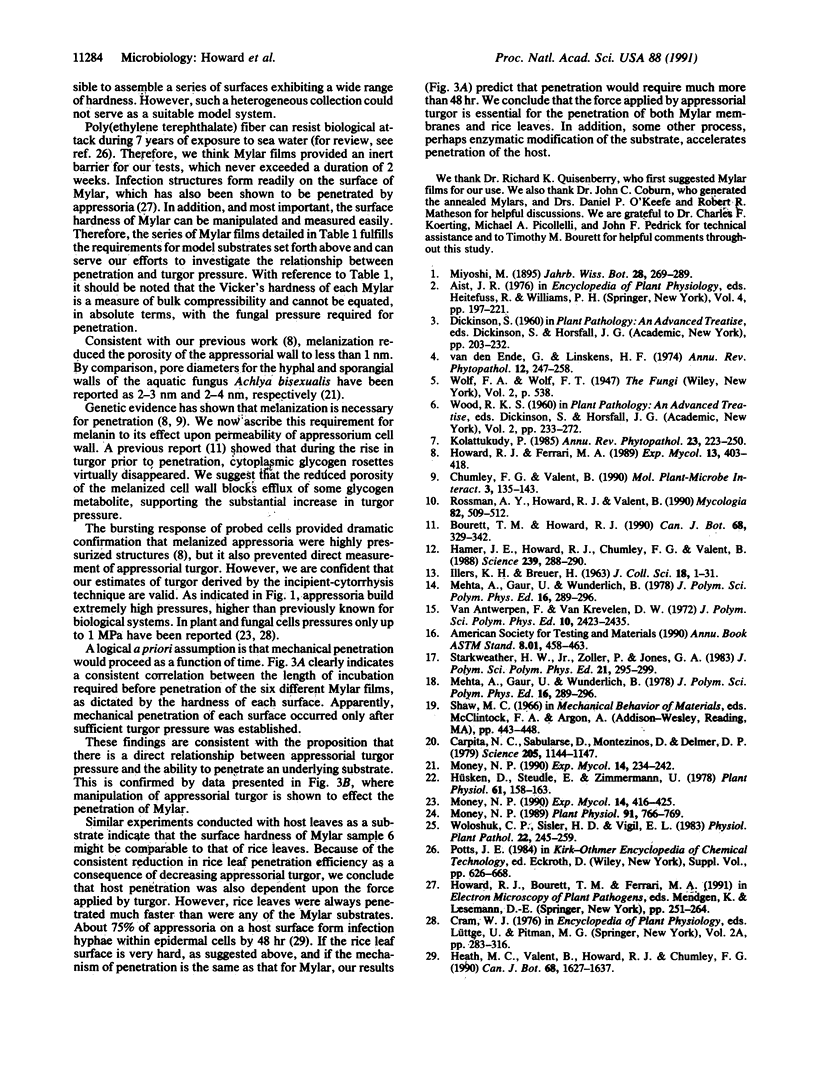Abstract
Many fungal pathogens penetrate plant leaves from a specialized cell called an appressorium. The rice blast pathogen Magnaporthe grisea can also penetrate synthetic surfaces such as poly(vinyl chloride). Previous experiments have suggested that penetration requires an elevated appressorial turgor pressure. In the present report we have used nonbiodegradable Mylar membranes, exhibiting a range of surface hardness, to test the proposition that penetration is driven by turgor. Reducing appressorial turgor by osmotic stress inhibited penetration of these membranes. The size of the turgor deficit required to inhibit penetration was a function of the surface hardness. Penetration of the hardest membranes was inhibited by small decreases in appressorial turgor, while penetration of the softer membranes was sensitive only to large decreases in turgor. Similarly, penetration of the host surface was inhibited in a manner comparable to penetration of the hardest Mylar membranes. Indirect measurements of turgor, obtained through osmotically induced collapse of appressoria, indicated that the infection apparatus can generate turgor pressures in excess of 8.0 MPa (80 bars). We conclude that penetration of synthetic membranes, and host epidermal cells, is accomplished by application of the physical force derived from appressorial turgor.
Full text
PDF



Images in this article
Selected References
These references are in PubMed. This may not be the complete list of references from this article.
- Carpita N., Sabularse D., Montezinos D., Delmer D. P. Determination of the pore size of cell walls of living plant cells. Science. 1979 Sep 14;205(4411):1144–1147. doi: 10.1126/science.205.4411.1144. [DOI] [PubMed] [Google Scholar]
- Hamer J. E., Howard R. J., Chumley F. G., Valent B. A mechanism for surface attachment in spores of a plant pathogenic fungus. Science. 1988 Jan 15;239(4837):288–290. doi: 10.1126/science.239.4837.288. [DOI] [PubMed] [Google Scholar]
- Hüsken D., Steudle E., Zimmermann U. Pressure probe technique for measuring water relations of cells in higher plants. Plant Physiol. 1978 Feb;61(2):158–163. doi: 10.1104/pp.61.2.158. [DOI] [PMC free article] [PubMed] [Google Scholar]
- Money N. P. Osmotic Pressure of Aqueous Polyethylene Glycols : Relationship between Molecular Weight and Vapor Pressure Deficit. Plant Physiol. 1989 Oct;91(2):766–769. doi: 10.1104/pp.91.2.766. [DOI] [PMC free article] [PubMed] [Google Scholar]




